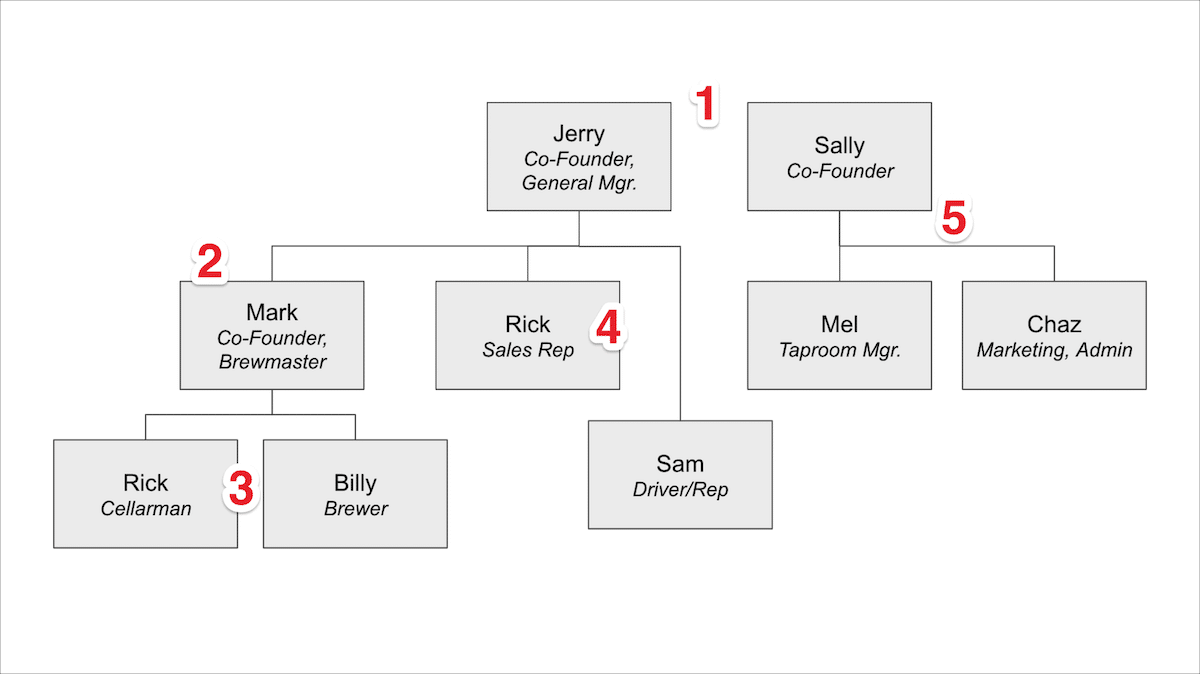This portion of the Intelligent Action Series walks through our Brewery Benchmarks Assessment process, step-by-step.
Step 1: Context & Endgame
Step 2: Financial Analysis
Step 3: Taproom, Distribution & Operations
Step 4: The Annual Goals
Step 5: Leadership & Vision
If you believe an assessment is the right move for your brewery this year, reach out and schedule a call to discuss your brewery’s current situation and how we can help.
Everyone’s heard this one, right?
Luck is what happens when preparation meets opportunity.
Well with what we’ve discussed over the past three weeks, if you aren’t prepared enough by now…
Let’s just say that next week I’m going to bring the heat on goading you to take action.
Brace yourself now.
But… before the deluge of Uncle Chris prodding and finger-wagging, we’ve left out one little detail:
It takes PEOPLE to make all of this happen.
Yea whoops.
That whole “messy” part… kinda need that to go right in order for any of this to get off the ground.
Which is exactly why an org chart and vision review is built into the Benchmarks Assessment process, and is the objective of…
Step 5: Leadership and Vision
Specifically, we referenced the importance of building the Option-Forward Brewing Team:
- The key seats are defined, but the scope and accountabilities can flex with the needs of the brewery.
- Lines of reporting define accountabilities but NOT lines of communication.
- Getting the right people on board is prioritized just as highly as getting the right seats defined.
And these are the evaluation criteria we take to the org chart assessment. For Hypothetical Brewery, this is what we see in their chart:

Some points to explore:
- With two co-founders at the top, how do decisions get made? I see a recipe for wheel-spinning, favoritism, and back-channeling unpopular choices.
- Does Mark feel like a second-class citizen? And what’s his reaction going to be if the other two founders ask him to produce 40% more with the same team? Production needs a prominent voice.
- Potentially two people doing the job of one. Speaking of producing more, these two need to be comfortable with the increase in expectations.
- Rick needs to sell more. How do we get him the comp structure, training and accountability in order to do so?
- This side of the chart needs a boost. The taproom needs to grow in order to build EBITDA back up, and they’re going to need some additional firepower to make that happen.
In the end, though: it starts at the top.
And so the owner’s real job is answering the questions that form the vision that drives the brewery forward… and then communicating that vision clearly to ownership, to the team, to the market.
Questions like:
Why did you get into this in the first place?
And:
Assuming we come out of the current craft market plateau sometime in the next 3 years…
What would you like to see happen financially with the brewery?
What would you like to see happen with your product and brand?
What would you like to see happen with the ownership’s role?
Which are all big determining factors that influence how we decide which financial targets to establish, which taproom/distro/operations goals to set, and which team we ultimately need to build.
And that’s a wrap for the assessment process.
I hope you found it informative, instructive, maybe even inspiring.
Next, we’re going to put that positive momentum to work as I ask you to make moves.
Because whether you do it, we do it, or somebody else does it…
You owe it to yourself to put these principles to work and get your brewery on the trajectory YOU choose.
Rather than leaving it up to the whims of the market to determine your fate.
Rest up Tiger, next we take action.